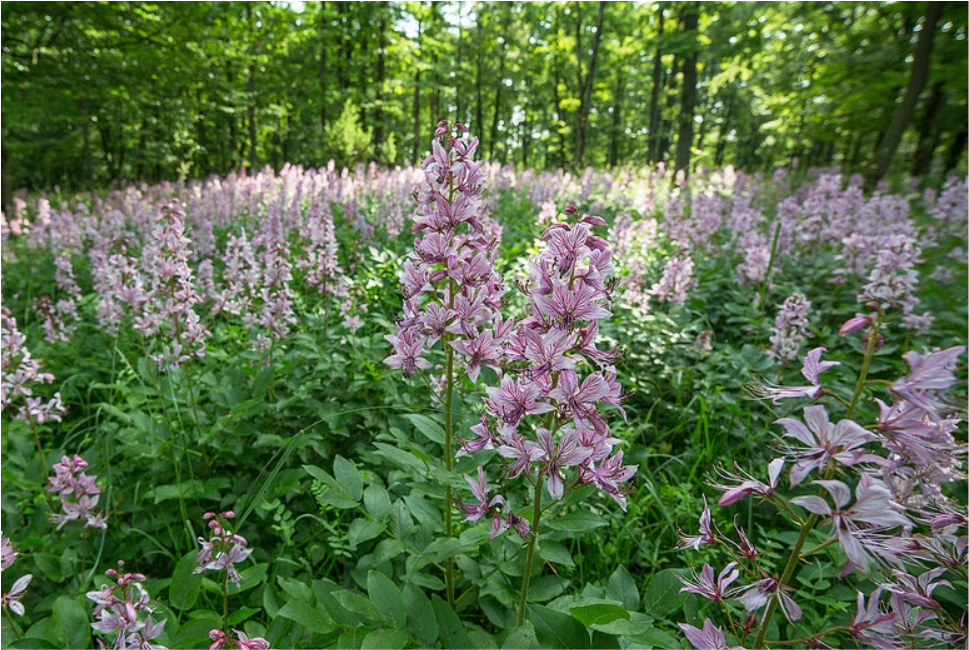
When faced with excessively dry, salty, or cold conditions, most plants attempt to conserve resources. To keep water in, they produce fewer leaves and roots and close their pores. They will die if their circumstances do not improve.
‘Extremophytes’ are plants that have evolved to survive in harsh environments. Schrenkiella parvula, a scraggly, branching member of the mustard family, not only survives but thrives in conditions that would kill most plants. It grows on the shores of Lake Tuz in Turkey, where the salinity of the water can be six times that of the ocean.
Stanford University researchers discovered that Schrenkiella parvula grows faster under these stressful conditions in a recent paper published in Nature Plants.
"Most plants produce a stress hormone that acts as a growth stop signal," said senior author José Dinneny, an associate professor of biology at Stanford. "However, it is a green light in this extremophyte. In response to this stress hormone, the plant speeds up its growth."
Dinneny and his colleagues are studying Schrenkiella parvula to learn more about how some plants deal with adversity. Their findings could aid scientists in developing crops that can grow in poor soil and adapt to the stresses of climate change.
"With climate change, we can't expect the environment to stay the same," said Ying Sun, a Salk Institute postdoctoral researcher who earned her doctorate at Stanford and is the paper's lead author. "Our crops will need to adapt to these rapidly changing conditions. We can help plants tolerate stress better and faster if we understand the mechanisms they use."
Schrenkiella parvula belongs to the Brassicaceae family, which includes cabbage, broccoli, turnips, and other valuable food crops. In areas where climate change is expected to lengthen and intensify droughts, it would be beneficial if these crops could withstand or even thrive during dry spells.
Plants produce abscisic acid, or ABA, when they are exposed to dry, salty, or cold conditions, all of which cause water-related stress. This hormone causes specific genes to be activated, essentially telling the plant how to respond. The researchers investigated how several Brassicaceae plants, including Schrenkiella parvula, responded to ABA. While the growth of the other plants slowed or stopped, the roots of Schrenkiella parvula grew much faster.
Schrenkiella parvula is related to the other plants in the study and has a genome that is very similar in size, but ABA activates different sections of its genetic code to produce completely different behaviour.
"That rewiring of that network explains, at least partially," Dinneny said, "why we're getting these different growth responses in stress-tolerant species."
Engineering Future Crops
Understanding this stress response and how to engineer it in other species, according to Dinneny, could benefit more than just food crops. Schrenkiella parvula is also related to a number of oilseed species that could be engineered and used as sustainable sources of jet fuel or other biofuels. More land would be available for cultivation if these plants could be adapted to grow in harsher environmental conditions.
"You want to grow bioenergy crops on land that isn't suitable for growing food, like an agricultural field with degraded soil or salinity from improper irrigation," Dinneny explained. "These are not prime agricultural lands, but land that would otherwise be abandoned."
Dinneny and his colleagues are still looking into the network of responses that could help plants survive in harsh environments. They will try to engineer related plants to be able to do the same by tweaking which genes are activated by ABA now that they know how Schrenkiella parvula maintains its growth in the face of limited water and high salinity.
"We're trying to figure out what the secret sauce is for these plant species—what allows them to grow in these unusual environments—and how we can use that knowledge to engineer specific traits in our crops," Dinneny explained.











